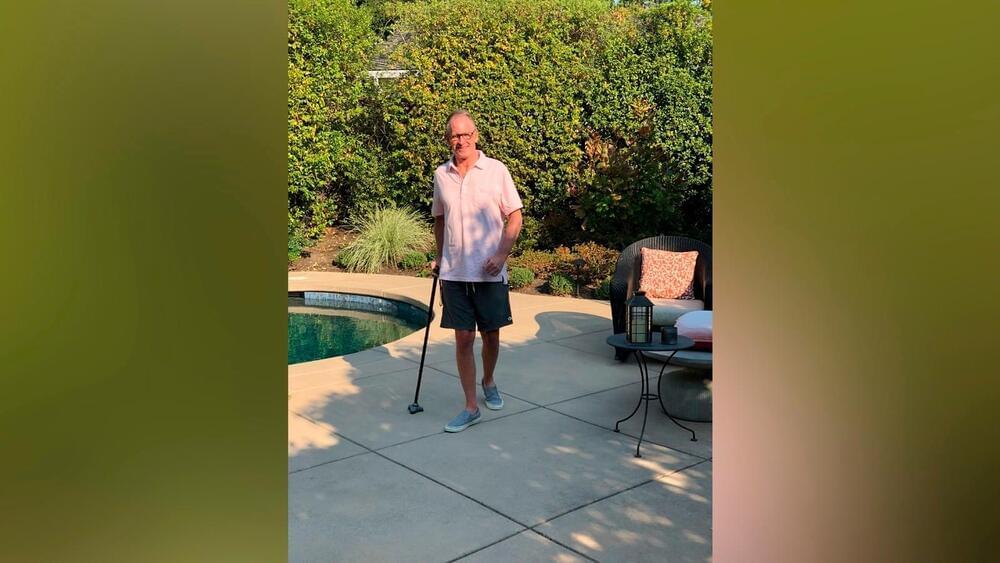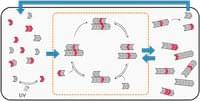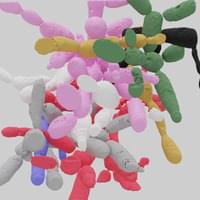Black holes are one of the most elusive objects in the space, but this simulation created by researchers in Netherlands might help us know more about their mysteries.
Get the latest international news and world events from around the world.

Paralyzed man who can walk again shows potential benefit of stem cell therapy
A man who was paralyzed from the neck down after a surfing accident seven years ago is now able to stand and walk on his own, thanks in part to a potentially groundbreaking stem cell treatment.
Chris Barr was the very first patient in a Mayo Clinic study that collected stem cells from his own stomach fat, expanded them in a laboratory to 100 million cells and then injected the cells into Barr’s lumbar spine.
Over five years after undergoing the therapy, Barr said he is continuing to gain more independence and get faster at walking.
EMERGENCY EPISODE: Ex-Google Officer Finally Speaks Out On The Dangers Of AI!
If You Enjoyed This Episode You Must Watch This One With Mustafa Suleyman Google AI Exec: https://youtu.be/CTxnLsYHWuI0:00 Intro 02:54 Why is this podcast im…

History of Apple Inc.
On this day in 1976: Apple was founded.
Apple Inc., originally named Apple Computer, Inc., is a multinational corporation that creates and markets consumer electronics and attendant computer software, and is a digital distributor of media content. Apple’s core product lines are the iPhone smartphone, iPad tablet computer, and the Macintosh personal computer. The company offers its products online and has a chain of retail stores known as Apple Stores. Founders Steve Jobs, Steve Wozniak, and Ronald Wayne created Apple Computer Co. on April 1, 1976, to market Wozniak’s Apple I desktop computer,[2] and Jobs and Wozniak incorporated the company on January 3, 1977,[3] in Cupertino, California.

Neonatal Sepsis in the NICU: New Study Offers Insight for More Accurate Diagnoses of Early-onset Cases
A new study in the Journal of Perinatology finds that when it comes to diagnosing early-onset infant sepsis, how blood samples are connected matters more than how many cultures are taken.
A team led by Yale Pediatrics’ Noa Fleiss, MD, finds obtaining more than one bloodculture doesn’t significantly…
Clinicians diagnose neonatal sepsis by taking a blood culture. New research evaluates factors that influence diagnostic utility while taking blood from infants.

Google’s AI Still Giving Idiotic Answers Nearly a Year After Launch
Despite having been in public beta mode for nearly a year, Google’s search AI is still spitting out confusing and often incorrect answers.
As the Washington Post found when assessing Google’s Search Generative Experience, or SGE for short, the AI-powered update to the tech giant’s classic search bar is still giving incorrect or misleading answers nearly a year after it was introduced last May.
While SGE no longer tells users that they can melt eggs or that slavery was good, it does still hallucinate, which is AI terminology for confidently making stuff up. A search for a made-up Chinese restaurant called “Danny’s Dan Dan Noodles” in San Francisco, for example, spat out references to “long lines and crazy wait times” and even gave phony citations about 4,000-person lines and a two-year waitlist.

The Neuron vs the Synapse: Which One Is in the Driving Seat?
A new theoretical framework for plastic neural networks predicts dynamical regimes where synapses rather than neurons primarily drive the network’s behavior, leading to an alternative candidate mechanism for working memory in the brain.
The brain is an immense network of neurons, whose dynamics underlie its complex information processing capabilities. A neuronal network is often classed as a complex system, as it is composed of many constituents, neurons, that interact in a nonlinear fashion (Fig. 1). Yet, there is a striking difference between a neural network and the more traditional complex systems in physics, such as spin glasses: the strength of the interactions between neurons can change over time. This so-called synaptic plasticity is believed to play a pivotal role in learning. Now David Clark and Larry Abbott of Columbia University have derived a formalism that puts neurons and the connections that transmit their signals (synapses) on equal footing [1]. By studying the interacting dynamics of the two objects, the researchers take a step toward answering the question: Are neurons or synapses in control?
Clark and Abbott are the latest in a long line of researchers to use theoretical tools to study neuronal networks with and without plasticity [2, 3]. Past studies—without plasticity—have yielded important insights into the general principles governing the dynamics of these systems and their functions, such as classification capabilities [4], memory capacities [5, 6], and network trainability [7, 8]. These works studied how temporally fixed synaptic connectivity in a network shapes the collective activity of neurons. Adding plasticity to the system complicates the problem because then the activity of neurons can dynamically shape the synaptic connectivity [9, 10].


Morphological Entanglement in Living Systems
Wires and cables are not the only things that can get entangled: Plants, fungi, and bacteria can all exhibit filamentous or branching growth patterns that eventually become entangled too. Previous work with nonliving materials demonstrated that entanglement can produce unique and desirable material properties, but achieving entanglement requires meticulously engineered material structure and geometry. It has been unclear if the same rules apply to organisms, which, unlike nonliving systems, develop through a process of progressive growth. Through a blend of experiments and simulations, we show that growth easily produces entanglement.
Specifically, we find that treelike growth leads to branch arrangements that cannot be disassembled without breaking or deforming branches. Further, entanglement via growth is possible for a wide range of geometries. In fact, it appears to be largely insensitive to the geometry of branched trees but instead depends sensitively on how long the organism can keep growing. In other words, growing branched trees can entangle with almost any geometry if they keep growing for a long-enough time.
Entanglement via growth appears to be largely distinct from, and easier to achieve than, entanglement of nonliving materials. These observations may in part account for the broad prevalence of entanglement in biological systems, as well as inform recent experiments that observed the rapid evolution of entanglement, though much still remains to be discovered.